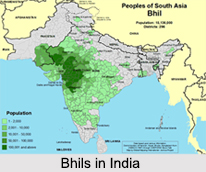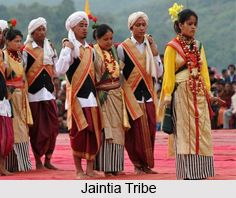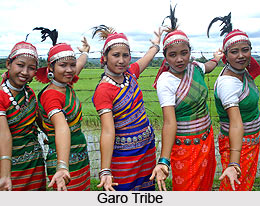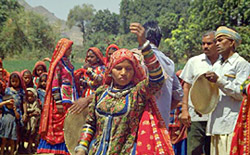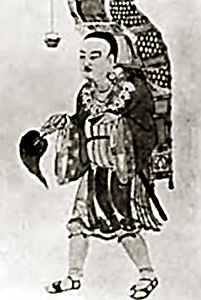 Gandharas formed an integral part of India from the earliest epoch of Indo Aryan civilisation, and is unique among the countries in India in that its history may be traced in unbroken continuity from Rig Vedic times down to the present day. The Gandharis or people of Gandhara are mentioned in the hymns of the Rig Veda, while the name Gandhara occurs in the other Vedas, and in the Epics and Puranas as well as the Buddhist books. Gandhara was on the north-west frontiers of India in the neighbourhood of the Kambojas, Madras and similar other tribes. It is generally accepted that Gandhara denotes the region comprising the modern districts of Peshawar in the North-West Frontier Province and Rawalpindi in the Punjab; but in the Old Persian inscriptions it seems to include also the district of Kabul in Afghanistan.
Gandharas formed an integral part of India from the earliest epoch of Indo Aryan civilisation, and is unique among the countries in India in that its history may be traced in unbroken continuity from Rig Vedic times down to the present day. The Gandharis or people of Gandhara are mentioned in the hymns of the Rig Veda, while the name Gandhara occurs in the other Vedas, and in the Epics and Puranas as well as the Buddhist books. Gandhara was on the north-west frontiers of India in the neighbourhood of the Kambojas, Madras and similar other tribes. It is generally accepted that Gandhara denotes the region comprising the modern districts of Peshawar in the North-West Frontier Province and Rawalpindi in the Punjab; but in the Old Persian inscriptions it seems to include also the district of Kabul in Afghanistan.
According to historical records Gandhara kingdom included the western Punjab and eastern Afghanistan. Its capital was Takshasila the ruins of which are still are present. From various accounts of the Gandharas it can easily be inferred that it appears that the boundaries of country varied at different periods in its history. At one time appears to have included the Afghan District round Kandahar and afterwards it receded to the mountains on the Indian frontier.
Records say that the Gandhras were not completely out of the Vedic race. The feature of Aryandom was strongly present among them. The Mahabharata contains many legends about Gandhara. In many of the parvas including the Adi parva, Udyoga parva, Drona parva, Ashvameghadik parva there has been ample mention of the Gandharas. Gandharas is also mentioned in the Indian Puranas. According to the Matsya, Vayu and Vishnu Purana a certain Gandhara was born in the family of Dhruyu, one of the sons of Yayati and the kingdom of Gandhara was named after him.
Gandharas had a strong presence in the times of Ashoka. Several rock edicts bear testimony to the fact that Gandharas had a prominent place during the reign of Ashoka. In fact Buddhist philosophy had reached its culmination in the fifth century AD when two famous Gandharas namely Asanga and Vasubandhu had flourished.
Hiuen-Tsang had said that the Gandhara country was rich in cereals, producing a variety of flowers and fruits and there was abundance of sugarcane in the Gandhara country. Most of the Gandhara people were timid and soft. They loved literature and while most of them belong to heretical schools, a few believe in the true law that is Buddhism.
The early capital cities of Gandhara were Puskulavati, Puskaravati and Takshasila. Among these the most ancient capital of Gandhara was Puskuravati. Taxila on the other hand was a great seat of learning in ancient India. Various arts and sciences were taught there and pupils from different parts of India used to flock to the city for instructions.
Regarding the trade relations of the Gandhara it can be said that trade relations existed between the Kashmir-Gandhara kingdom and the north-eastern kingdom of Videha. Horse dealers figure prominently amongst the Gandharian traders. Moreover Vayu Purana has mentioned that the Gandhara horses were considered the best of all. Production of valuable blankets and woollen shawls are also associated with the Gandharas and in the latter years it was in Gandhara that the finest double die type of coins were struck. The school of art in the Gandhara era is a celebrated one and has formed a separate genre of art with the name the Gandhara School of Art.


















